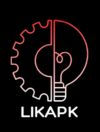In a world obsessed with speed, smoothness, and instant gratification, the idea of designing friction into technology might sound counterintuitive. After all, the gold standard of UX is often “frictionless”—a seamless user journey from click to result, from desire to fulfillment.
But what if friction is exactly what we need?
Welcome to the philosophy of frictionful design—a deliberate design approach that introduces pauses, resistance, or barriers in order to promote thoughtfulness, ethics, well-being, or control.
The Myth of Seamlessness
The modern tech industry worships at the altar of convenience. One-click shopping, autoplay videos, biometric unlocking, same-day delivery—these features make life easier, but they also short-circuit our critical thinking.
Frictionless systems often optimize for engagement, not intentionality. They’re designed to get us to do things fast, not necessarily to help us make better choices.
- One-click purchases can lead to compulsive spending.
- Endless scrolls can devour hours of attention.
- Seamless content feeds can lead to algorithmic bubbles and emotional manipulation.
This is where frictionful design steps in—not as a barrier, but as a brake.
What Is Frictionful Design?
Frictionful design intentionally introduces micro-barriers into user interactions. These friction points are not bugs or annoyances—they’re ethical interventions.
Some examples include:
- “Are you sure?” confirmations before sending sensitive content.
- Delays before you can refresh your feed again, to discourage compulsive behavior.
- Time locks or quotas on apps that encourage overuse.
- Thought prompts before sharing emotionally charged content (“Why are you sharing this?”).
These patterns are designed not to frustrate the user, but to return agency to them. They create space for reflection, intention, and self-awareness in systems that otherwise reward impulse.
Digital Speed Bumps for a Noisy World
In physical spaces, we use speed bumps to prevent dangerous acceleration. Frictionful design works the same way in digital environments.
Instead of:
- “How fast can we make this?”
We ask:
- “Should this be this easy?”
- “Who benefits from this smoothness?”
- “What might be lost in the absence of friction?”
The idea is not to make tech unusable, but more humane—especially in areas involving mental health, privacy, safety, or ethics.
Case Studies in Frictionful Thinking
- BeReal: A social app that limits posting to one window per day, creating friction that curbs over-sharing and performance pressure.
- Gmail’s “Undo Send”: A short delay that gives users a chance to retract an impulsive or mistaken email.
- Forest App: Encourages focus by making users plant a virtual tree that dies if they switch to a distracting app.
These tools don’t block the user—they pause them, nudge them, remind them.
Designing with Dignity
Frictionful design aligns closely with the principles of humane technology. Instead of treating users as data points or revenue generators, it treats them as complex, fallible humans—capable of impulse, but also capable of reflection.
Designing with dignity means:
- Respecting user attention as a limited, valuable resource.
- Allowing for conscious disengagement.
- Encouraging intentional interactions over compulsive ones.
The Future Isn’t Frictionless
As AI becomes more integrated into our interfaces, the temptation will be to make everything automated, predicted, and invisible. But if we remove too much friction, we risk creating systems that move faster than our values can keep up with.
Friction is not failure. It’s feedback.
Just as we appreciate the resistance of a brake pedal or the feedback of a well-designed tool, we should learn to value digital friction—especially when it protects us from our own worst instincts.
Conclusion: Press Pause
Frictionful design is a quiet rebellion against the tyranny of efficiency. It’s a reminder that not all slowness is bad, and not all friction is frictional.
In an age of automation and overstimulation, the most radical interface may be one that simply says:
“Are you sure?”


